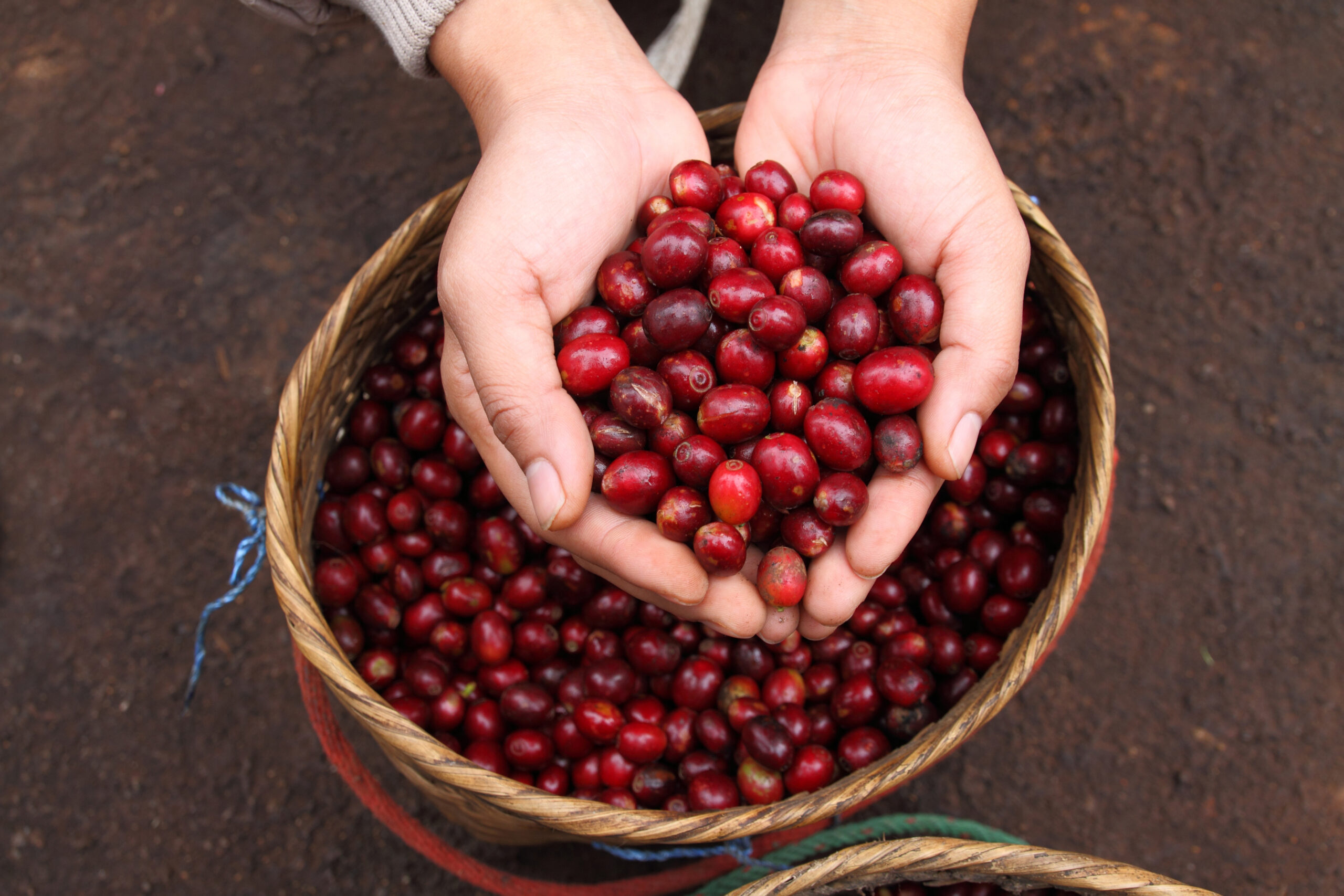
Provision of the right nutrient at the right time for coffee is one of the most complex crop fertilization programmes facing tropical farmers and growers.
The primary purpose of classic fertiliser programmes is to furnish and fulfil the nutrient needs of coffee plants as they graduate from the nursery into the field to achieve maturity and the first full crop of coffee berries. And from there on to satisfy the changing needs of mature trees as they pass through the growth cycle in successive years.
This must be done without causing imbalance in either soil structure or fertility and crucially soil pH (acidity/alkalinity) which is central to maintaining the availability of all essential nutrients, at all times, to the coffee plant. Crucial and critical in this respect is:
- Ratio of potassium to calcium, in turn linked to the availability status of soil magnesium
- The nitrogen to phosphorous ratio
- And at plant tissue level the ratio of carbohydrate to nitrogen
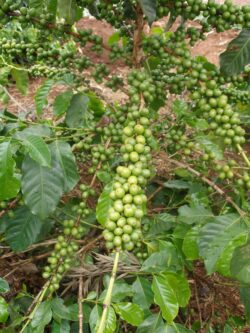 For this reason, the use of completely soluble nutrients by foliar feeding has become an increasingly recognised and sought-after alternative to soil-applied solid fertilizer. Nutrients enter the foliage and move into cells for ‘immediate’ utilisation. As such they never make contact with the soil and thus avoid any negative long term impact on soil structure and fertility. Coffee exhibits a sharp sequential pattern of growth and development reflected in dynamic critical changes within the growth cycle and accompanying seasonal phenology. Changing sequential nutrient demand is correspondingly complex so it makes sense to use sprayable water soluble nutrient formulations, to meet the exacting and dynamic demand for nutrients.
For this reason, the use of completely soluble nutrients by foliar feeding has become an increasingly recognised and sought-after alternative to soil-applied solid fertilizer. Nutrients enter the foliage and move into cells for ‘immediate’ utilisation. As such they never make contact with the soil and thus avoid any negative long term impact on soil structure and fertility. Coffee exhibits a sharp sequential pattern of growth and development reflected in dynamic critical changes within the growth cycle and accompanying seasonal phenology. Changing sequential nutrient demand is correspondingly complex so it makes sense to use sprayable water soluble nutrient formulations, to meet the exacting and dynamic demand for nutrients.
Coffee is a beverage crop for which consumer acceptance is critically linked to taste and aroma in the cupped infusion. It is controlled by combinations of hundreds of different taste and aroma compounds in the beans to give each coffee origin a signature flavour. Getting nutrients right in amounts, timing and balance is absolutely essential to ensure each origin has the full complement and right concentrations of flavour chemicals.
The coffee nutrition equation is complicated by the diverse conditions experienced by coffee. The crop is grown as different types and under a wide range of tropical growing regions each with its own ‘peculiar’ weather pattern. First and major distinction is between Coffea arabica and Coffea robusta, the former generally considered to be of higher and finer quality but requiring exacter growing conditions and more ‘tender loving care’ in the tropical highlands where the majority of Arabica coffee is grown. Robusta coffee is the bigger of the two crops in world production terms with a tendency to tolerate a wider range of conditions in the generally hotter and harsher tropical lowlands where most Robusta coffee is grown.
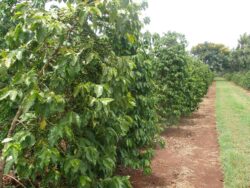 Last but not least, both Arabica and Robusta coffees can be found growing comfortably in widely disparate tropical regions differentiated by the seasonal sequence and severity of wet and dry seasons with clear implications for coffee phenology and therefore coffee nutrition.
Last but not least, both Arabica and Robusta coffees can be found growing comfortably in widely disparate tropical regions differentiated by the seasonal sequence and severity of wet and dry seasons with clear implications for coffee phenology and therefore coffee nutrition.
When taken in total and combination all of these factors clearly show that provision of soluble nutrients sprayed onto coffee by foliar feeding is the logical and most sensible way forward for coffee nutrition.
OMEX have designed a range of products that meet the physiological demands and nutrient needs of coffee as it moves through the annual growth cycle. And to satisfy the specific nutrient requirements of different coffee species (Arabica and Robusta) and commercially bred varieties around the coffee growing world as guided by those who cultivate them – the coffee growers.
Boron is critical and indeed life-saving for coffee trees trying to hold on to as many berries as possible, in the face of natural and normal physiological berry drop which is severely aggravated by boron deficiency.
OMEX have shown coffee farmers that they don’t have to accept mass berry drop as an entirely natural phenomenon and as an unavoidable problem. Through timely foliar sprays of OMEX soluble boron products, trees are better able to hang on to the majority of their developing berries and thereby maximise yields.
Vietnam, the Asian coffee ‘tiger’ is a relatively recent hub of global coffee production, having risen rapidly to become one of world’s biggest producers of top quality Robusta coffee and in a remarkably short period of time.
Now one quarter century from its inception and as Vietnam’s coffee estates are undergoing their first major re-plant, OMEX continues to play an important part in helping this leading South East Asian coffee nation utilise the yield and quality from its Coffea robusta trees.
As Vietnam enters its second quarter century of contemporary coffee production, and with re-planting well under way, the coffee crop is not without its problems. These have come mainly in the form of soil-borne, plant parasitic nematode infestations which are killing large numbers of young trees.
OMEX is also starting to assist with a soil-applied, environmentally- sensitive product derived from an entirely natural plant source, a soil amendment/amelioration product in contrast to the hard chemical pesticides that are traditionally used to control nematode infestations.
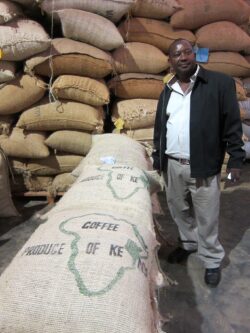
Africa grows a large number of different coffee origins, both Arabica and Robusta, of which the high (altitude) grown Arabica from Kenya is almost certainly the most high profile of these African coffee origins.
The Kenyan coffee growth cycle can be conveniently ‘kicked off’ at the end of the ‘long rains’ which end in June with a twin burst of growth and development as bud differentiation above ground and a root flush below ground. This ‘double-barrelled’ burst of growth and development activity requires a high power, broad spectrum nutrient application response, this can be supplied and satisfied by two foliar applications of OMEX Foliar 3X , one in August followed by another at the end of September. This product clearly provides a powerful across the board boost in macronutrients with Nitrogen, Phosphorous and Potassium present at 24.00 per cent w/v, 24.00 per cent w/v and 18.00 per cent w/v, respectively.
OMEX 3X is a fully water soluble suspension fertiliser containing NPK, Magnesium and the full complement of chelated essential micronutrients (trace elements). Among the trace elements is Boron (B) at 0.031 per cent w/v and there will be a critical requirement for this trace element in the following weeks with the onset of flowering and fruit set at the start of October. The same goes for zinc which is present at 0.081 per cent w/v, these two micronutrients (B and Zn) together are the most important requirement for coffee during this approaching period of reproductive growth and development.
Zinc is a key co-factor component of enzyme systems and boron has a direct and positive impact on flowering. OMEX has designed and developed a unique product for coffee in Kenya after the industry approached them. Appropriately called ‘Zibo’ this ‘two in one’ product based on boron and zinc is applied as a foliar spray to mature coffee trees when the coffee growth cycle starts following the end of dry season.
Twin applications of OMEX Foliar 3X in August and September not only satisfy the requirements of bud differentiation and root flush occurring at this time but prepare the plants for the following flowering and fruit set stages.
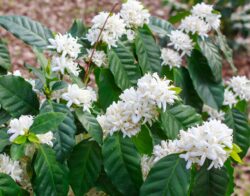 Flowering and fruit set, which occur from October to December, are targeted with another twin application this time using OMEX Sequential 2 with one application in November followed by another approximately one month later. Sequential 2 is another powerful, broad spectrum (NPK, Mg and chelated trace elements) nutrient formulations. The power in this case is packed into its high potassium content (40 per cent w/v) to satisfy the correspondingly high and powerful demand for this particular macronutrient in the later stages of coffee reproductive growth and development.
Flowering and fruit set, which occur from October to December, are targeted with another twin application this time using OMEX Sequential 2 with one application in November followed by another approximately one month later. Sequential 2 is another powerful, broad spectrum (NPK, Mg and chelated trace elements) nutrient formulations. The power in this case is packed into its high potassium content (40 per cent w/v) to satisfy the correspondingly high and powerful demand for this particular macronutrient in the later stages of coffee reproductive growth and development.
Twin applications are necessary because flowering and fruit are followed during December and January by a surge of vegetative growth which tails off from the end of January. And alongside a ‘thinning period’ called fruit drop before the final stages of fruit (berry) filling, ripening and maturity.
Overall this is clearly a high physiological stress time for coffee which is reflected in falling carbohydrate reserve levels. But the activity is not over yet because there is yet another flush of root growth and development in March and April which will have already been targeted by another twin application (February and March) of OMEX Foliar 3X. This is to maintain macronutrient (NPK) levels and especially nitrogen and potassium required, respectively, for vegetative growth and reproductive development that occur simultaneously during this period.
From Kenya to Colombia
So far we had only talked about coffee in the field but there is another dimension to the ‘growth and development’ cycle for coffee. It starts with coffee seedlings and their time in the nursery, the planting out of young plants into the field and the growth and development of these plants to maturity and the first full crop of coffee berries.
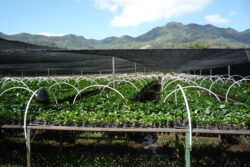 OMEX recommend Bio 20 application to seedlings as a pre- transplant dip or a foliar spray Bio 20. Bio 20 is a highly concentrated suspension fertilizer containing macronutrients, Mg and chelated trace elements, complemented by an organic extract derived from a single variety of seaweed (marine algae). The seaweed extract has proven beneficial effects for coffee plants through stimulation of root development to give newly establishing plants a sound start. Bio20 is well established in its ability to produce more root biomass and therefore maximum utilisation of soil water and the nutrients dissolved therein.
OMEX recommend Bio 20 application to seedlings as a pre- transplant dip or a foliar spray Bio 20. Bio 20 is a highly concentrated suspension fertilizer containing macronutrients, Mg and chelated trace elements, complemented by an organic extract derived from a single variety of seaweed (marine algae). The seaweed extract has proven beneficial effects for coffee plants through stimulation of root development to give newly establishing plants a sound start. Bio20 is well established in its ability to produce more root biomass and therefore maximum utilisation of soil water and the nutrients dissolved therein.
Phosphorous and calcium had hardly been mentioned and ominously there is a largely negative link between these two nutrients at soil level. Younger coffee provides the best responses to phosphorous, with a major established role for phosphorous in promoting root growth and development. It is important to maintain high levels of phosphorous in the coffee leaves and coffee berries to ensure high quality coffee beans, and analogous to the situation in Irish potato (Solanum tuberosum) for high quality tubers.
The big problem for and with phosphorous is at soil level where this macronutrient may be plentiful but ‘locked up’ by correspondingly high levels of calcium and therefore insufficiently available for uptake by the roots. Soil zinc is affected in the same way. OMEX CalMax (22.50 per cent w/v Calcium) is a dedicated soluble calcium product for coffee, which by-passes the soil and is widely used by coffee growers in Colombia. Regarding phosphorous, OMEX Sequential 1 contains phosphorous at 40.0 per cent w/v, with OMEX Sequential 2 containing potassium at the highest concentration 40.0 per cent w/v.
OMEX have designed a broad range of products dedicated to coffee, including ‘Zincprod’ (zinc phosphate providing zinc and phosphorous), OMEX Foliar Boron, OMEX Magnesium Plus and OMEX K41 a high potassium product. All are widely used on the Colombian coffee crop in South America.
Coffee is almost certainly the most universally grown tropical tree crop in the upland and lowland tropics. As such, coffee crops and the farmers who grow them face the broadest possible spectrum of crop nutritional challenges.
Article by Dr Terry Mabbett
